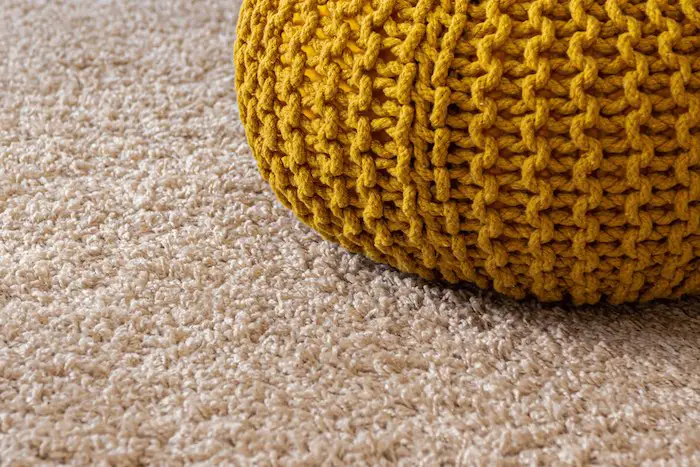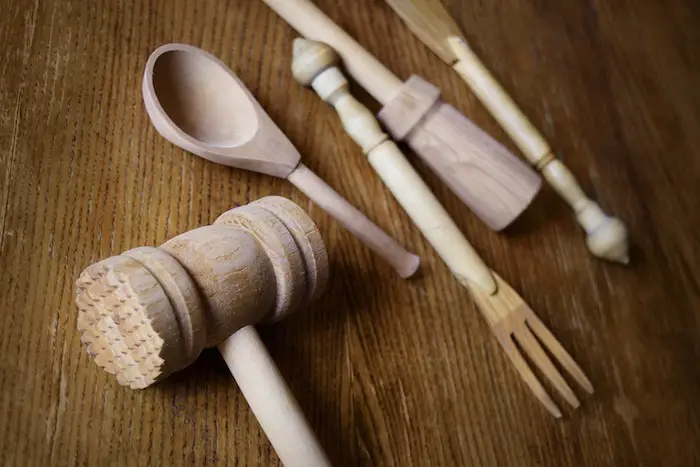Carpets are essential in your home. They are one of the best flooring options. If you are looking to trap the heat within your home, walk on some soft underfoot, or have a comfortable area to play, work, and sit in your home, a carpet will do. The best part is, carpets have a long life span, but as they say, everything good has an end. So does a carpet.
How often should carpets be replaced? After 7-15 years, it could be time to replace your carpet. The lifespan of an average carpet is between 7-15 years, after which you will have to buy a new one. That said, note that how often you replace an old carpet depends on several factors. For instance, a carpet in your bedroom is not used as much as in your living room. Therefore, the latter may be replaced sooner than the former.
This article will look at the lifespan of a carpet, factors that determine the carpet’s lifespan, how to know your carpet should be replaced, and other related issues. Keep reading to learn more about carpets and their lifespan.
What is the Lifespan of a Carpet?
As mentioned before, a carpet can last you from between 7-15 years. This is a general estimate of all carpets. However, notice that we cannot tell precisely how long your carpet will last since that is subjective to some factors, first, how you use it, the quality of the carpet, among other things.
Factors That Determine the Lifespan of a Carpet
- Foot Traffic
The higher the traffic, the lower the longevity of the carpet. In simple terms, it matters where you have placed your carpet. A carpet place in a room with minimal use and foot traffic will have an extended life as compared to one put in a room used frequently.
The thing is, carpet fibers get bent, crushed and distorted with every foot traffic, which in turn, ages the carpet. Also, note that if you tend to use your carpet frequently, there is a lot of dirt and friction exposed to it. These things contribute to the aging of your carpet.
Other than that, where your carpet is placed also determines its lifespan. For instance, a carpet exposed to sunlight and humidity will not last long.
- Quality of the Carpet
The material of your carpet will also determine its lifespan. If your carpet is made of high-quality material, it will last longer than carpet made of low-quality material.
The best material for a carpet is either wool or nylon. Nylon is best for homes with pets and the occurrence of mildew. Wool on the other is the best for insulation and it is the most durable.
However, note that wool does not do well with pets. It is also likely to be affected by mildew. Nylon, on the other hand, is not best with stains. If a stain on a nylon carpet is not addressed early enough, then it may be permanent.
Therefore, choose a carpet with the pros and cons of each material in mind. Remember, the higher the quality of carpet, the higher the price, the greater the longevity.
- Color and Pattern
Carpets with more sophisticated patterns and darker colors tend to last longer than carpets with plain patterns and lighter colors. Dark colors tend to hide stains as compared to brighter colors. That is to say; dark colored carpets will disguise a higher quality for longer than lighter ones. Complex patterns on the hand are harder to be ripped co pared to plain patterns
- Carpet Backing
Carpet backing is one of the most significant factors that determine the longevity of your carpet. We recommend you choose a carpet with cushion backing. The cushion backing absorbs the impact of the foot traffic, extending the carpet’s lifespan by about 40-50%.
On the other hand, hard backed carpets tend to spoil faster since there is no fiber to absorb the foot traffic
- Maintenance Routine
It is as simple as carpets that are maintained last longer. They can last up to 15 years. The maintenance routine of a carpet involved many things. One of the easiest yet most effective ways is to clean it regularly.
How Do I Tell My Carpet Is Aging
Between the 5th -7th years, problems associated with an old carpet begin to crop up. So what are these problems? How do you know it is time to replace your carpet?
- Stains
If it is becoming increasingly difficult to hide stains under furniture and rugs, it might be time for you to replace your carpet. Most carpets are manufactured with a stain-resistant finish, making it easier for you to get rid of stains when cleaning. However, with time the stain-resistant treatment fades and stains on your carpet becomes more challenging to clean.
Eventually, you end up with a carpet resembling a minefield due to the multiple different stains. Can the stains be cleaned? When your carpet has clocked this level, DIY cleaning will do little to nothing to eliminate the stains. However, some professional cleaning may come in handy, although it is also not sustainable.
Stains caused through biological processes such as vomit and pet urine are easy to clean. However, these fluids tend to get absorbed into the carpet padding leading to the growth of molds and mildew. Should this mildew and mold continue to grow undetected, you risk exposing yourself to some respiratory issues. Therefore, the only safe way is to dispose of a carpet that has stubborn stains
See Also: Can You Clean A Mattress With A Carpet Cleaner
- Matting
A carpet is a home to many things, including dust, dirt, mites, and molds, depending on how often it is cleaned. If you notice these things begin to pile up in your carpet, so much that foot trafficking is pushing them further into the carpet, causing the fibers of the carpet to flatten, it might be time to change that carpet.
When your carpet is matted down, even professional cleaning will do little to have it stand up again. It is especially common for carpets made of polyester fibers.
- Stinking Carpet
Ideally, cleaning your carpet, especially by deep cleaning, should help you get rid of the foul smells coming from it. Therefore, if your carpet continues to stink even after cleaning, it might be time to replace it.
A persistent unpleasant smell could mean that the dirt, spills and dust have penetrated deep into the carpet fibers and down into the padding so that no amount of cleaning can get rid of them.
A lingering lousy smell from your carpet could also mean that there are molds and mildew in the under carpet. Molds and mildew pose a health threat to you if left unattended. To be safe than sorry, replace the carpet.
- Wear and Tear
If your carpet has begun to rip, especially on the significant walkways, this is a clear sign of aging. It might be time to replace it. What if the tears are minimal? Well, you can fix small cracks for instance, by moving furniture or placing rugs on the ripped parts. You can also higher professional to help with carpet tears. However, if the damages are significant, if you have moved furniture and you have run out of ideas, we recommend purchasing a new carpet.
See Also: How Soon Can You Put Furniture On New Carpet
- Threadbare Wear
If you can see the horizontal threads and caking of your carpet, it is time to replace it. This type of thread wear out is likely to occur on areas of the carpet with heavy foot trafficking. That is to say, no amount of creativity can hide such wear outs and especially for frequently used rooms.
- Shifting Shades
Exposure to sunlight, age, and bleach due to cleaning detergents may change the color of your carpet. Fading alone may not be a solid reason to replace your carpet. However, if the carpet has uneven colors or patches of light and dark shades, you may have to replace it. Moreover, if the carpet has faded on areas that cannot be hidden, it may warrant a new carpet.
- Worn-out Padding
Without padding, a carpet is just a piece of fabric on your floor. Padding is important since it makes it comfortable to walk and sit on the carpeted floor. It is also vital since it acts as a buffer to noise on the floor.
Therefore, when the padding on your carpet is worn out due to old age, the carpet loses some of its primary function. If you begin to notice unevenness as you walk on the carpet, wrinkles, and a crinkling sound under your feet, it means the padding of your carpet is worn out. It is time to purchase a new carpet for the comfort of your home.
- Age
The maximum number of years your carpet can serve you without complication is 15 years. It does not matter how well you clean it or maintain it, 15 years is the maximum; carpets do not last forever. Therefore, if it has been past two decades, do yourself a favor and start to budget on purchasing a new carpet. You will be surprised how much difference a new carpet will make in your home.
The best part about replacing your carpet is that you begin to experiment with new designs in the market. The technology used on carpets is ever evolving.
Related Questions
Can an old carpet make you sick?
Yes, it can. Carpets are home to trapped dust, dander, molds, mildew, and other allergens. Once these things pile up in your carpet, they become a risk to your respiratory health due to old age. It could be expressed in terms of allergy symptoms, a running nose, asthma attacks, or even a simple cough.
Prolonged exposure to these allergens could evolve from respiratory irritation to neurotoxicity. Neurotoxicity is a condition where your nervous system is damaged due to exposure to toxic substances. These toxins either disrupt the activities of the nerves or kills the nerves altogether. Dead nerves mean loss of some brain and body functions. As such, you want to avoid such health complications at all costs. If your carpet is old, get rid of it.
Other health conditions brought by an old carpet include skin irritation such as athlete’s foot. Yes, athlete’s foot can be spread through the carpet. If you walk barefoot on a fungi infested carpet, the fungi cut through your skin and begin to breed in your foot, causing skin irritation, that is, an athlete’s foot.
The other possible health complication is stomach related complications. This is common among kids. Due to the build-up of stains, dirt, and other things in your old carpet, many bacteria and fungi are reared. Therefore, if you pick something that has fallen on the carpet and introduces it to your mouth, you risk getting stomach related diseases.
After how long should I clean my carpet?
It is recommended that you clean your carpet at least once a year. This yearly cleaning refers to deep cleaning, where you might have to hire a professional cleaner. However, as a routine practice, you can vacuum your carpet at least once a week. Vacuuming helps to get rid of the loose particles of food, dust, and dander before they get trapped more buried into the carpet fabric.
A vacuumed carpet is usually easier to deep clean. For your professional cleaning needs, we recommend steam cleaning since it helps remove the dirt from deep into the carpet. It is also an excellent method to help your carpet dry faster and completely, reducing the chances of growth of molds and mildew.
See Also: Can You Put Humidifier On Carpet?


